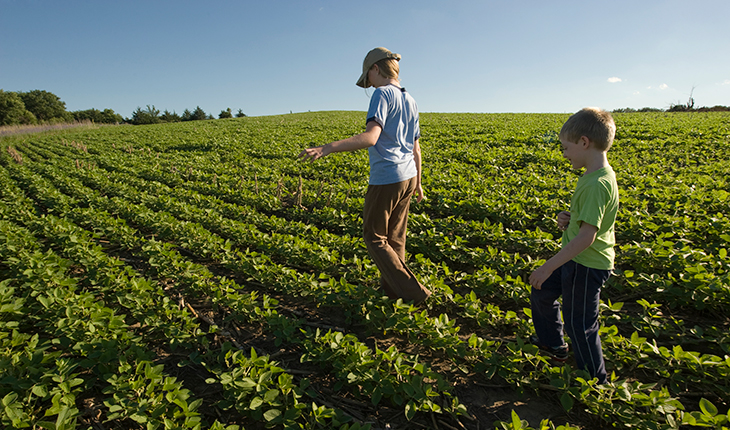

All fields have some variability, apparent each fall after harvest when we look at yield maps from the data collected by the combine. Agriculture has changed a lot over the past couple of decades with the advancement of new tools and equipment to help farmers manage this variability. Yield monitoring equipment was the first evolution to become common place among farmers, which shed a light on exactly how much variability existed in their fields. The second evolution is variable rate technology which made site specific management of seed, fertilizer and irrigation water possible.
Of course with the investment made by farmers for this advanced technology, they want to use the equipment to its full potential. Some people think that it is necessary to variable rate seed and fertilizer on each field to maximize yield. Each spring farmers and agronomist create a plethora of prescriptions and not all of them necessary. Previous yield history is often the base layer from which these prescriptions are created. Occasionally, our management strategies and prescriptions can be flawed and we end up manipulating our yield data that we are using to drive decisions.
My yield data has variability, with the high yielding areas always the high, and the low yielding areas are always low.
If this is a true statement, then using yield data to develop a site specific management plan may work well. Most of the time using yield data for management decisions is not advised without further investigation. We must know the source of yield variability and attempt to correct when possible. Poor soil fertility or a low soil pH are often causes for yield variability. These conditions can be identified with a grid soil sample and corrected with variable rate fertilizer or a lime application. A need for irrigation or sub surface tile are conditions that could possibly be changed, but often require a significant investment. Site specific management may be appropriate until these changes can be made. Once corrected, you can return to uniform management. Soil types and topography are conditions that will not change and site specific management would be appropriate.
When using site specific management, it is highly recommended that you implement just one correction at a time. Apply a variable rate fertilizer treatment, and then evaluate its positive or negative effect on yield at harvest time. Overtime you may come to use multiple variable rate applications with fertilizer, water and seed. A common perception is that site specific management and variable rate applications are intended to increase yields, but you can also use them to reduce the input costs of poor producing areas of the field or widen the spread between high yields and low yields.
Site specific management and variable rate technology can be a valuable tool for growers. Collect as much data as possible before making any significant changes, and sometimes uniform management can still be the best approach.